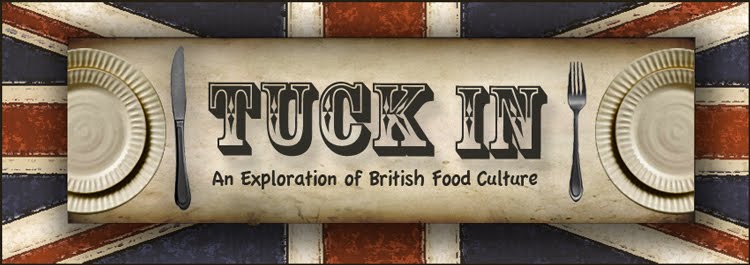As the air starts to turn chilly, the cloud cover increases, and a jacket becomes necessary to block the picked-up breeze, we start to realize that fall is fast approaching. And as with any change of the season, we experience a change in appetite. Fall brings about cravings for foods that retain the lightness of the fading summer dishes yet bring in some richer ingredients to subside the oncoming chill. We associate it with cool, crispy fruits, good cheese, and orange vegetables. We start to take more notice of the oven we neglected all summer and opt for longer, slower cooking than quick grilling. Heavier meats are reintroduced, as are spices and herbs that bring about earthiness and warmth. It reminds us of the holiday season not too far off and the comforts of time spent wiling away in the kitchen. Sorry this sounds like it was written by Martha Stewart but Fall food is my favorite kind of food so I just had to have my moment to express my fondness.
When I went to the market last week, I knew that if I didn’t make a home-cooked, Fall meal soon, I would start to panic. Cooking is my passion and I just haven’t had the time to do it yet. So, with a shopping list at hand, I searched for quality ingredients to make a quintessential Fall dish that also, funnily enough, happened to be a very British dish. The menu: an English pork chop topped with apples, sage, and bleu cheese (a Jamie Oliver recipe) and served with a side of roasted purple cauliflower. I bought every single ingredient fresh from the market including my glorious pork chop from a vendor called The Ginger Pig. I knew I had to have this beauty when I saw it glistening pink in the case and was ecstatic at the fact that is was all-natural, free-range, organic pork, England’s signature meat.
And finally, last night, my first free night since obtaining my ingredients, I made the dish. I literally made happy moaning noises as I took my first bite, attracting strange stares from my flatmates. But they could hardly blame me based on the amazing aroma I had created in the room. The cauliflower was still crisp tender with a few lightly charred edges and it had a really subtle nutty flavor from the roasting. The pork chop was the most succulent piece of pork I have ever had in my life, a pure sign of good quality meat from happy farm pigs. It was so juicy and flavorful, and, paired with the sweet caramelized apples, earthy sage, and strong bleu cheese, the dish as a whole was absolutely rounded in flavor. Everything just worked so well. It warmed me up on a particularly dreary and rainy night yet was not too heavy, took no time at all to make, and satiated my want for Fall food and desire to cook…for now at least.
Roasted English Purple Cauliflower
½ head purple cauliflower
1 clove garlic, minced
½ lemon
olive oil, salt, pepper
1 clove garlic, minced
½ lemon
olive oil, salt, pepper
Preheat the oven to 400 degrees Fahrenheit (I had to do Celsius though which is 200). Cut the cauliflower into florets and place them in an even layer in an ovenproof baking dish. Toss in the minced garlic, squeeze the lemon over top, and drizzle a bit of olive oil over everything until it’s lightly coated. Sprinkle with salt and pepper and toss everything to combine. Place uncovered in the oven for 25-30 minutes until the cauliflower reaches your desired doneness (I like it still a bit crunchy so I left it in for a bit less time). Begin preparing the pork once you place this in the oven. When done, remove from the oven and serve immediately
English Pork Chops
1 large pork chop, with fairly thick fat cap.
½ crunchy apple (I used a cox variety) cut into about 6 wedges
4-5 sage leaves
bleu cheese (I used Stichelton)
olive oil, butter, salt, pepper
½ crunchy apple (I used a cox variety) cut into about 6 wedges
4-5 sage leaves
bleu cheese (I used Stichelton)
olive oil, butter, salt, pepper
Heat the oven to 400 degrees Fahrenheit. Lay the pork chop on a cutting board and using a very sharp knife, make cuts along the fatty edge of the chop, about every inch, going all the way through. Our knives here aren’t very sharp so I could quite cut all the way through but I did my best. Sprinkle the pork with salt and pepper on both sides. Heat the olive oil in a pan over medium-high and when it’s hot, carefully place the chop into the pan. Cook 3-4 minutes on each side until nicely browned and the fat starts to get a bit crispy. The pork won’t be completely done yet because it will finish cooking in the oven.
Place the chop into a small ovenproof dish and set aside. Using the same pan, add a knob of butter to the pork juices and let it melt. Then, add the apple wedges and sauté for about 2 minutes until soft and browned. Lay the apples over the pork chop. Coat the sage in a bit of oil and place then on top too. Finally crumble as much of the bleu cheese as you desire over everything. Pop into the oven, next to the cauliflower, for about 4-6 minutes until the pork is cooked through and the cheese is melted. If everything works out, the pork and cauliflower should be done at the same time. All that’s left to do is savor every single bite of this beautiful English dish!





































